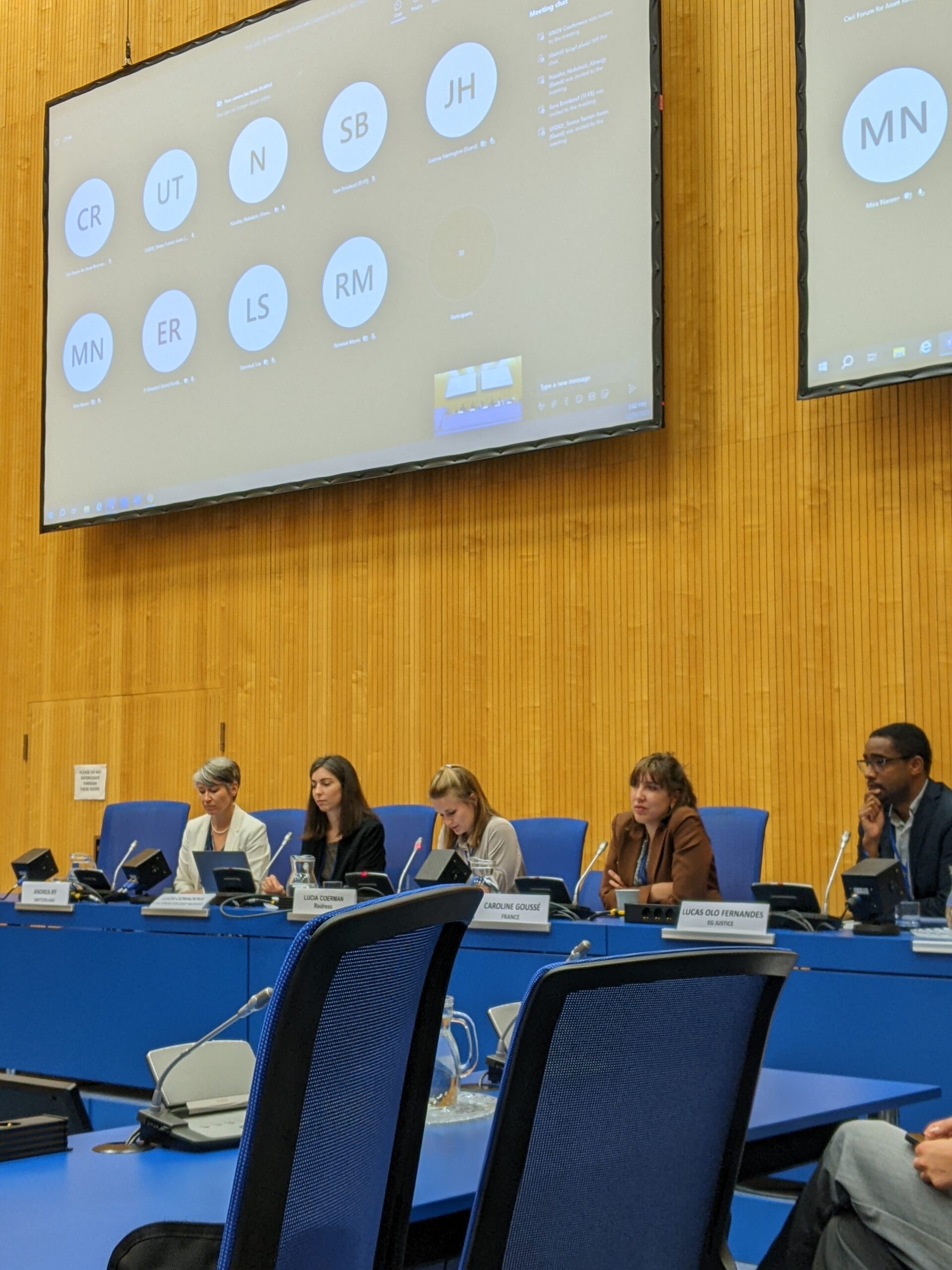The first event on the margins of the 14th session of the Implementation Review Group (IRG) in June 2023 co-organized by the Civil Forum for Asset Recovery (CiFAR), REDRESS and the UNCAC Coalition gathered experts from governments and civil society to explore how the use of indirect return mechanisms has developed over time, the different characteristics and forms used in indirect returns, and the opportunities and challenges they present. The event also reflected important considerations in using indirect mechanisms in key returning jurisdictions. By exploring these issues, points for further discussion at the next UNCAC CoSP were identified.
Lucia Coerman, Legal Officer at REDRESS, moderated the event and the following speakers shared their experiences and recommendations:
- Andrea Iff: Specialist for asset recovery at the Swiss Development and Cooperation Agency (SDC), Switzerland
- Caroline Goussé: Special Assistant on Anti-Corruption and Legal Advisor to the Economic Diplomacy Directorate of France
- Lucas Olo Fernandes: Legal Consultant at EG Justice
- Lucia Cizmaziova: Research and Policy Manager at CiFAR
- Sara Brimbeuf (online): Head of Illicit Financial Flows Advocacy at Transparency International France
- Teresa Turner-Jones (online): Senior Trial Attorney at the US Department of Justice in the Money Laundering and Asset Recovery Section (MLARS) in the International Unit

Indirect return mechanisms describe the practice of returning recovered money across borders indirectly via third-party entities that stand between governments. The benefits of indirect returns include their potential to increase transparency and oversight of the return process by involving a third-party entity that is independent of the governments involved. In combination with additional safeguarding measures employed by third-party entities, the increased transparency and oversight in this type of return leads to lower risks of misappropriation of the returned assets, especially in fragile contexts and situations of weak rule of law. Another benefit consists in the possibility of third-party entities to provide additional capacity.
Disadvantages relate to higher administrative and financial burdens when compared to returning assets directly. The costs vary depending on the number of safeguarding measures and oversight actions taken. Particularly in politically challenging contexts, these need to be higher. Other possible limitations to the sustainability of indirect return programs are posed by funding dependency and time limits of such programs. Next to that, the involvement of third-party entities bears the risk of being politically fraught and might hinder a swift asset return process.



